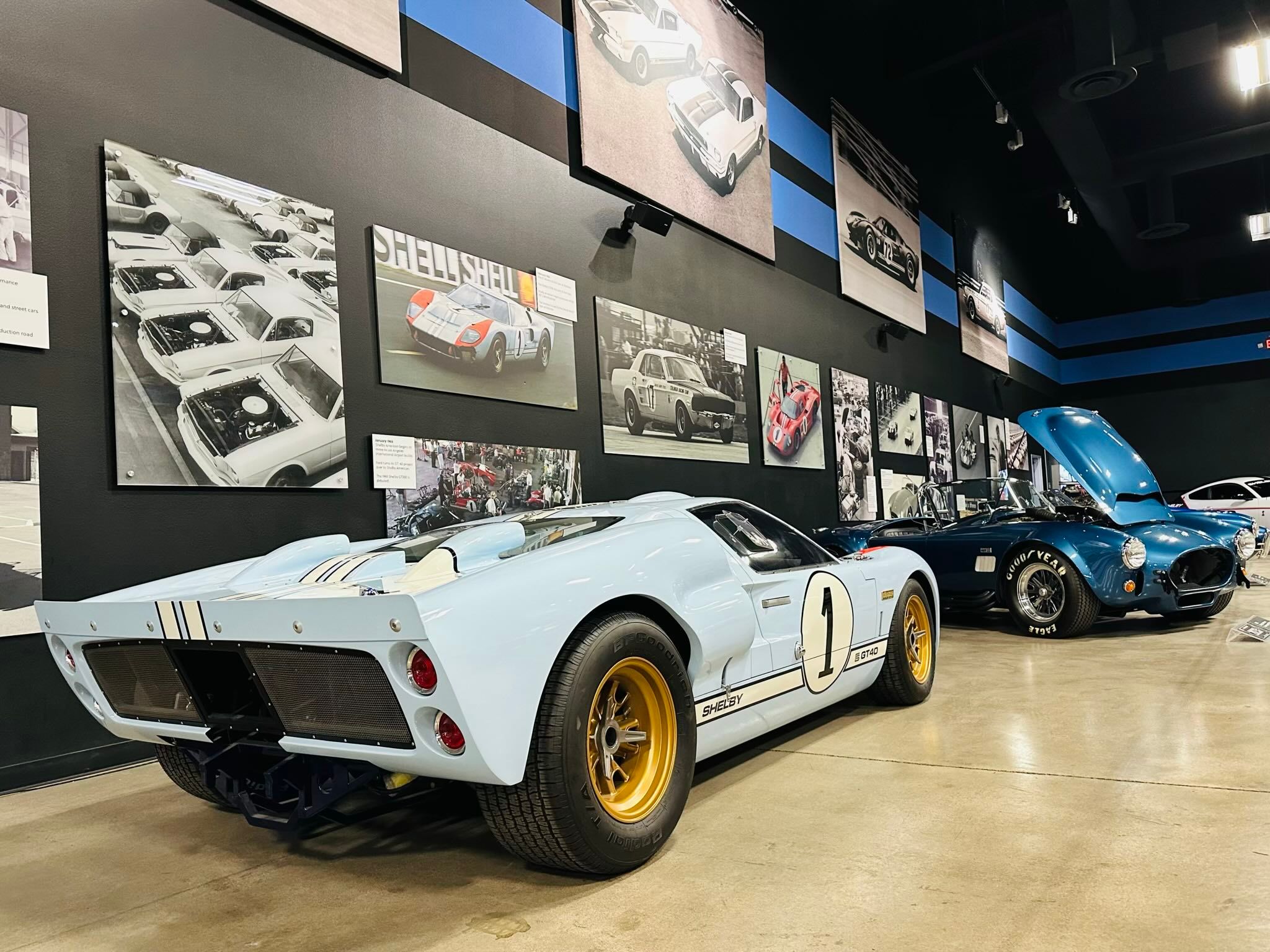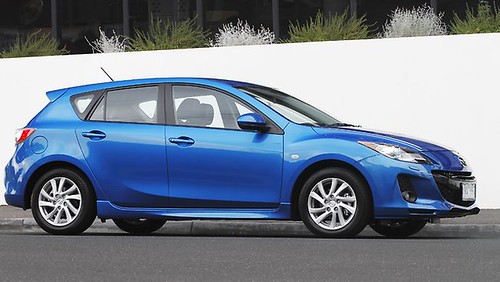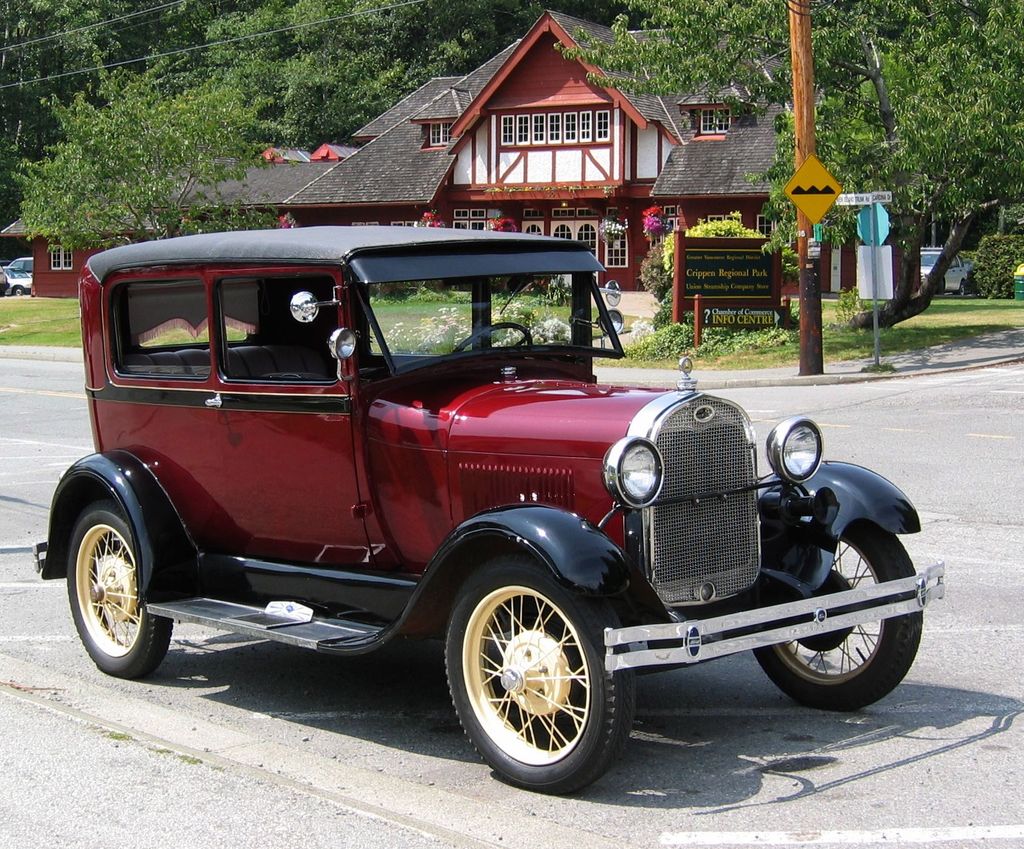
The Golden Age of Automobiles – just the phrase itself conjures images of gleaming chrome, thunderous V8s, and designs that dared to dream. From the roaring 1940s through the vibrant 1960s, this was a period when machines weren’t just about transportation; they were declarations of identity, monuments to engineering prowess, and pure, unadulterated passion on wheels. Car lovers still talk about this era for a reason, captivated by the spirit of innovation and the sheer audacity of design that continues to shape car culture in profound ways we feel today.
This was a time when manufacturers pushed boundaries, blending raw horsepower with aggressive design to dominate the streets and racetracks alike. These automobiles were symbols of bold American ambition, as well as a global appreciation for sophisticated European craftsmanship, embodying both performance and unique identity. Each model from this revered period holds a special place in history, representing the pinnacle of engineering and attitude.
We’re about to embark on an exhilarating journey, peeling back the layers of automotive history to celebrate 15 of these unforgettable standouts. These are the machines that turned heads, set speed records, and continue to ignite a fervent spark in the hearts of enthusiasts worldwide. Prepare to obsess, because these Golden Age icons aren’t merely vehicles; they are timeless legends that demand our awe and admiration forever, proving that true automotive artistry never fades.
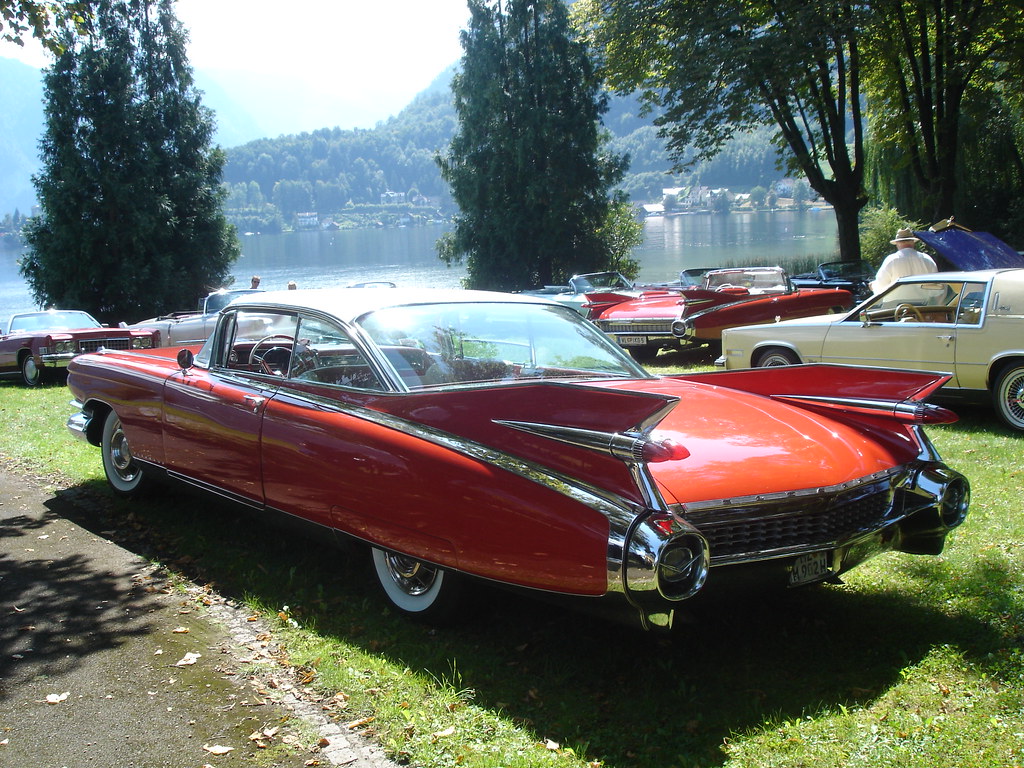
1. **1959 Cadillac Eldorado: The Fins That Soared Above All**No car screams “postwar exuberance” quite like the 1959 Cadillac Eldorado. It stands as the ultimate, most flamboyant expression of tailfin design, pushing boundaries in a way that remains instantly recognizable. Its towering fins, adorned with jewel-like taillights, weren’t just an aesthetic choice; they were a bold declaration, a testament to an era of unbridled optimism and an eagerness to embrace the future. This was luxury and futurism personified, heavily accented with chrome that gleamed under every sun.
Beneath that dazzling exterior, the Eldorado was powered by a robust V8 engine, ensuring its commanding presence wasn’t just visual. Cadillac truly pushed styling to extremes with this model. Consider the Eldorado Biarritz convertible, a magnificent machine that weighed nearly 5,000 pounds. Its price tag was equally astonishing, costing double what an average house did at the time. This wasn’t just a car; it was a status symbol, a rolling sculpture of American prosperity.
The Eldorado also introduced significant engineering, notably its “X-frame” construction. While this innovation did improve ride comfort, it also highlighted a fascinating aspect of the era: design sometimes held more sway than safety, offering little side-impact protection. This prioritization of dramatic aesthetics over purely practical considerations perfectly encapsulates the daring, unapologetic spirit of the late 1950s automotive landscape, making the 1959 Eldorado an unforgettable icon of audacious design.
Car Model Information: 1976 Cadillac Eldorado Convertible
Caption: 1963 Cadillac Eldorado Convertible
Name: Cadillac Eldorado
Manufacturer: Cadillac
Production: 1952–2002
Layout: Front-engine, rear-wheel-drive layout
Aka: Cadillac Fleetwood Eldorado
Class: Personal luxury car
Successor: Cadillac CTS
Categories: 1960s cars, 1970s cars, 1980s cars, 1990s cars, 2000s cars
Summary: The Cadillac Eldorado is a luxury car manufactured and marketed by the Cadillac Motor Car Division of General Motors from 1952 until 2002, over twelve generations.
The Eldorado was at or near the top of the Cadillac product line. The original 1953 Eldorado convertible and the Eldorado Brougham models of 1957–1960 had distinct bodyshells and were the most expensive models offered by Cadillac during those years. The Eldorado was never less than second in price after the Cadillac Series 75 limousine until 1966. Beginning in 1967, the Eldorado retained its premium position in the Cadillac price structure, but was manufactured in high volumes on a unique, two-door personal luxury car platform.
The Eldorado carried the Fleetwood designation from 1965 through 1972, and was seen as a modern revival of the pre-war Cadillac V-12 and Cadillac V-16 roadsters and convertibles.
Get more information about: Cadillac Eldorado
Buying a high-performing used car >>>
Brand: Cadillac Model: Eldorado
Price: $28,499 Mileage: 31,898 mi.

2. **1953 Buick Skylark: Elegance on Wheels**With its sweeping curves and a gracefully low-slung stance, the 1953 Buick Skylark remains a true masterpiece of automotive artistry. It was conceived not merely as transportation, but as a rolling sculpture, a testament to what design could achieve when unconstrained by convention. This was a car that exuded an almost ethereal elegance, hinting at the bespoke craftsmanship poured into every detail.
Production of the Skylark was incredibly limited, with only 1,690 units built that year, making each one a rare gem. Every single Skylark was hand-modified from Buick’s standard production line, a level of individual attention that is almost unimaginable today. Its opulent details, from sumptuous leather interiors to the distinctive “sweepspear” chrome accent tracing its sides, spoke volumes about its exclusivity and premium positioning in the market.
The Skylark also distinguished itself with pioneering features. It sat a full three inches lower than standard Buicks, achieved through unique wheel cutouts that enhanced its sleek profile. Moreover, it arrived equipped with power steering, power brakes, and even power windows—luxuries that many cars wouldn’t incorporate for years to come. GM initially intended the Skylark as a special 50th-anniversary celebration model, and its enduring legacy is evident in its status today as one of Buick’s most collectible and revered vehicles.
Car Model Information: 1970 Buick Skylark
Name: Buick Skylark
Caption: 1972 Buick Skylark
Manufacturer: Buick
ModelYears: 1953–1954,1961–1972,1975–1998
Layout: FR layout,Front-engine, front-wheel-drive layout
Successor: Buick Century
Categories: 1980s cars, 1990s cars, All articles with unsourced statements, Articles with short description, Articles with unsourced statements from June 2018
Summary: The Buick Skylark is a passenger car formerly produced by Buick. The model was made in six production runs, during 46 years, over which the car’s design varied dramatically due to changing technology, tastes, and new standards implemented over the years. It was named for the species of bird called skylark.
The Skylark name first appeared on a limited production luxury convertible using the Buick Roadmaster’s chassis for two years, then was reintroduced in 1961 as a higher luxury content alternative to the entry-level Buick Special on which the Skylark was based upon. It was then positioned as Buick’s luxury performance model when the Buick GSX was offered. As GM began downsizing during the late 1970s, the Skylark became the entry-level model when the Special nameplate was used as a trim package designation, then in the 1980s was offered as a front-wheel-drive vehicle where it was both a coupe and sedan for three different generations.
Get more information about: Buick Skylark
Buying a high-performing used car >>>
Brand: Buick Model: Skylark
Price: $29,995 Mileage: 123 mi.
Read more about: The Golden Age of Chrome and Power: 15 Iconic American Cars That Defined the 1950s

3. **Mercedes-Benz 300SL Gullwing: Gullwing Perfection**The Mercedes-Benz 300SL Gullwing burst onto the scene, immediately dazzling car lovers with its utterly futuristic doors and incredibly aerodynamic shape. It wasn’t just a car; it was a vision from the future, a bold statement of engineering supremacy and design daring. Its advanced engineering made it one of the fastest cars of its time, a true benchmark for performance. Everywhere it appeared, its sleek, unmistakable silhouette guaranteed to turn heads and capture imaginations.
This mechanical marvel was also the world’s first production car to feature fuel injection, a revolutionary technology that significantly boosted its output. With this innovation, the 300SL commanded an impressive 240 horsepower, a prodigious figure for the 1950s. This power translated into breathtaking speed, allowing the car to hit an astonishing 160 mph, firmly establishing its dominance on both road and track.
The famous gullwing doors, while undeniably a style icon, were actually born out of engineering necessity. The car’s lightweight tubular frame, designed for maximum rigidity and performance, was simply too tall for conventional doors to be fitted effectively. Thus, a pragmatic solution blossomed into one of automotive history’s most iconic design elements. Today, the legendary status of original 300SLs is reflected in their auction prices, regularly exceeding $1 million, a testament to their timeless appeal and groundbreaking heritage.
Read more about: The Curated Canvas: Inside Ralph Lauren’s Exclusive Garage of Vintage Race Cars and Modern Exotic Hypercars
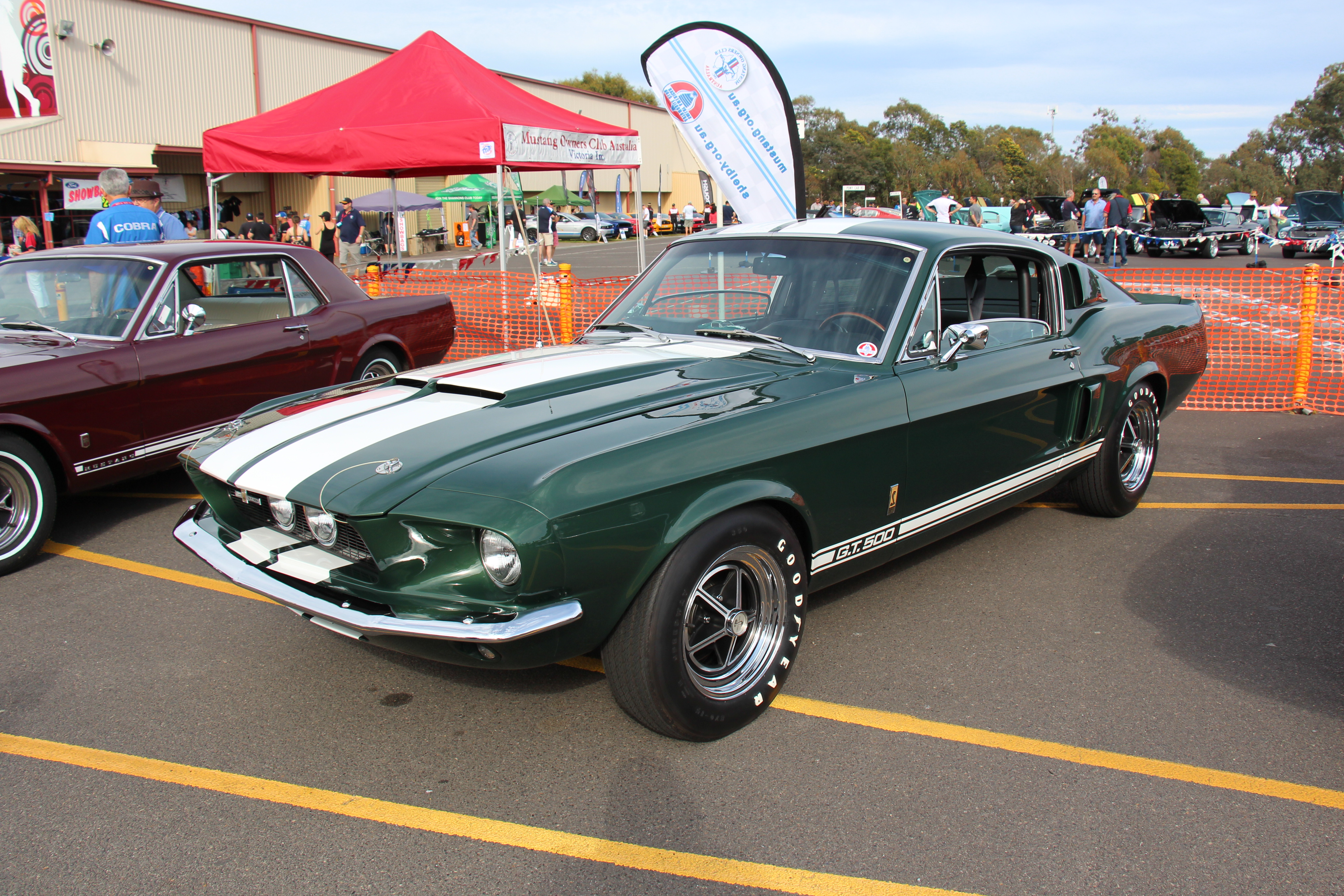
4. **1967 Shelby GT500 Mustang: The Original American Muscle**When the 1967 Shelby GT500 Mustang roared into existence, it wasn’t just another car; it was a force of nature, embodying aggressive styling and raw, untamed power. This machine immediately stood out as a defiant icon in the burgeoning muscle car era. Its thunderous V8 engine promised exhilarating performance, while its distinctive racing stripes conveyed a clear message of rebellion and fierce individuality. This was a car built for those who craved both speed and a statement.
At the heart of this beast was Carroll Shelby’s uncompromising vision. He famously dropped a massive 428-cubic-inch Police Interceptor V8 engine directly into the Mustang fastback chassis. This potent powerplant officially produced over 355 horsepower, though automotive legends and many enthusiasts contend it was significantly underrated, closer to a staggering 400 horsepower. Such raw, accessible power defined the GT500’s character, making it a true legend of the street.
The GT500 wasn’t just about engine output; it was a meticulously crafted performance machine. It featured lightweight fiberglass body panels, a clever engineering choice to trim crucial pounds. Functional scoops adorned its muscular body, ensuring optimal airflow, while an optional roll bar hinted at its true racing pedigree. The Shelby GT500 brought genuine track-bred performance to the public roads, solidifying its place as a quintessential icon of American muscle and a vehicle that perfectly blended brute force with sophisticated engineering.
Car Model Information: 2024 BMW X5 sDrive40i
Name: Shelby Mustang
Caption: 1965 Shelby Mustang GT350
Manufacturer: Unbulleted list
Aka: Unbulleted list
Production: Unbulleted list
Designer: John Chun
Assembly: Unbulleted list
Class: Unbulleted list
Platform: Unbulleted list
Related: Ford Mustang (first generation),Ford Mustang (fifth generation)
Layout: Front-engine, rear-wheel-drive layout
Categories: 1970s cars, 2000s cars, 2010s cars, 2020s cars, All Wikipedia articles written in American English
Summary: The Shelby Mustang is a high-performance variant of the Ford Mustang built by Shelby American from 1965 to 1967 and by the Ford Motor Company from 1968 to 1970.
In 2005, Ford revived the Shelby nameplate for a high-performance model of the fifth-generation Ford Mustang.
Get more information about: Shelby Mustang
Buying a high-performing used car >>>
Brand: Shelby Model: GT500 Mustang
Price: $37,758 Mileage: 39,959 mi.
Read more about: Relive the Roaring ’60s: A High-Octane Journey Through 14 Legendary Cars That Defined a Golden Era of Automotive Innovation!

5. **1964 Pontiac GTO: The Pioneer of Drag Racing**Widely hailed as the first true muscle car, the 1964 Pontiac GTO didn’t just join the automotive landscape; it ignited a revolution. This machine quickly became a drag-strip favorite, its sleek, no-nonsense design hinting at the serious power lurking beneath its hood. From its very inception, the GTO secured its legendary place in automotive history, redefining what an affordable performance car could be.
The genesis of the GTO is a tale of clever defiance. GM had previously imposed a ban on engines larger than 330 cubic inches in mid-size cars. Pontiac, ever ingenious, found a loophole: they offered the mighty 389 V8 as a special option package, bypassing the corporate directive. This audacious move wasn’t just a technicality; it was a rebellious act that paved the way for an entirely new segment of high-performance vehicles, shaking up the industry establishment.
Despite initial doubts from management, sales of the GTO absolutely exploded, soaring past 30,000 units in its inaugural year alone. This overwhelming success proved the hunger among consumers for accessible power. Its legendary Tri-Power setup, featuring three two-barrel carburetors, became the stuff of gearhead dreams, providing a distinct performance edge. The GTO wasn’t just a trend; it was a phenomenon that made high-speed driving feel personal and accessible without sacrificing refinement, firmly cementing its influence on both street racing and showroom sales.
Car Model Information: 1966 Pontiac GTO Coupe
Name: Pontiac GTO
Caption: 2005 Pontiac GTO
Manufacturer: Pontiac (automobile),Holden
Class: Mid-size car,Compact car,Mid-size car
Production: 1963–1974,2003–2006
Predecessor: Pontiac Tempest
Layout: Front-engine, rear-wheel-drive layout
ModelYears: 1964-1974 2004-2006
Categories: 1970s cars, 2000s cars, All articles with unsourced statements, Articles with short description, Articles with unsourced statements from October 2008
Summary: The Pontiac GTO is a front-engine, rear-drive, two-door, and four-passenger automobile manufactured and marketed by the Pontiac division of General Motors over four generations from 1963 until 1974 in the United States — with a fifth generation made by GM’s Australian subsidiary, Holden, for the 2004 through 2006 model years.
The first generation of the GTO is credited with popularizing the muscle car market segment in the 1960s. Some consider the Pontiac GTO to have started the trend with all four domestic automakers offering a variety of competing models.
For the 1964 and 1965 model years, the GTO was an optional package on the intermediate-sized Pontiac LeMans. The 1964 GTO vehicle identification number (VIN) started with 22, while the 1965 GTO VIN began with 237. The GTO was designated as a separate Pontiac model from 1966 through 1971 (VIN 242…). It became an optional package again for the 1972 and 1973 intermediate LeMans. For 1974, the GTO was an optional trim package on the compact-sized Ventura.
The GTO model was revived for the 2004 through 2006 model years as a captive import for Pontiac, a left-hand drive version of the Holden Monaro, itself a coupé variant of the Holden Commodore.
Get more information about: Pontiac GTO
Buying a high-performing used car >>>
Brand: Pontiac Model: GTO
Price: $59,991 Mileage: 4,408 mi.
Read more about: The Thunderous Seven: Classic Muscle Cars That Defined American Automotive Culture
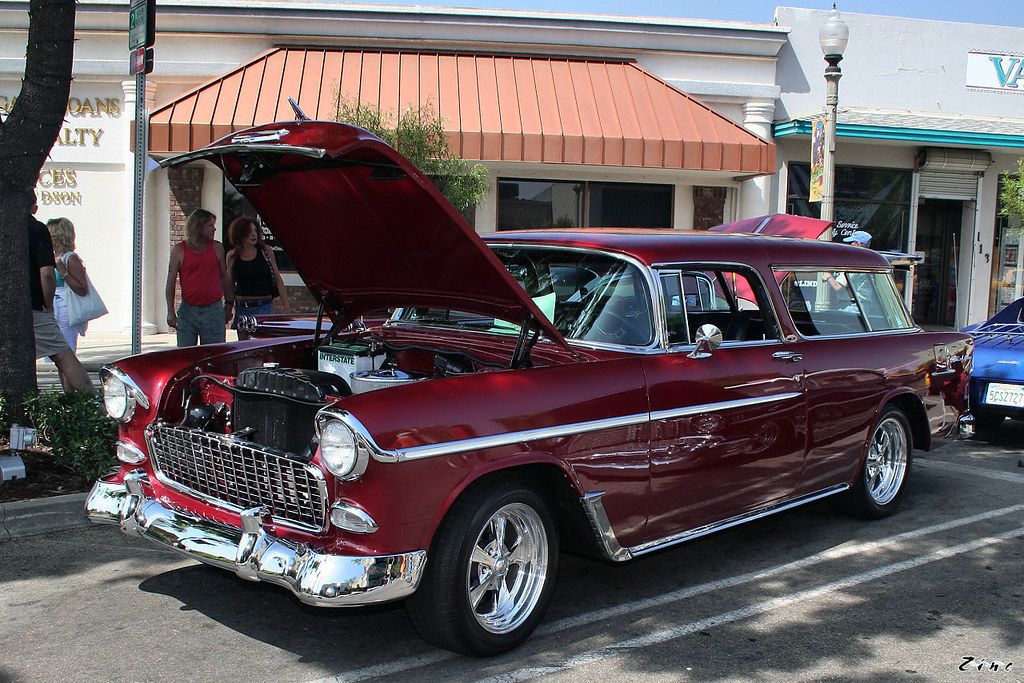
6. **Chevrolet Nomad: The Coolest Wagon**In an era often dominated by sedans and convertibles, the Chevrolet Nomad dared to redefine the station wagon. Far from the utilitarian boxiness of its contemporaries, the Nomad emerged with a distinctively sporty two-door design, vibrant color options, and eye-catching wraparound rear windows. It wasn’t just a family hauler; it was a statement of style, effortlessly blending practicality with a generous dose of flair and a captivating cool factor.
The Nomad debuted as a star within Chevy’s iconic “Tri-Five” lineup in 1955, standing out immediately with its distinctive Bel Air styling cues. Despite its iconic looks and immediate visual appeal, its initial sales were surprisingly modest. Only about 8,500 units were sold in 1955, a figure that, ironically, contributes to the rarity and desirability of surviving examples today. Finding a well-preserved Nomad is a triumph for any collector.
Its unique aesthetic was further enhanced by a ribbed roof and distinctively slanted B-pillars, giving it an almost European, bespoke flair—a stark contrast to the more conventional, boxy wagons of the era. The Nomad was a car ahead of its time, demonstrating that utility didn’t have to sacrifice panache. Its enduring legacy, particularly models like the 1957 Chevrolet Nomad, continues to make it a cherished favorite among restoration enthusiasts, preserving its reputation as one of the Golden Age’s most stylish and innovative wagons.
Car Model Information: 1957 Chevrolet Nomad
Caption: 1955 Chevrolet Bel Air Nomad
Name: Chevrolet Nomad
Manufacturer: Chevrolet
Production: 1955–1961,1968–1972
Layout: FR layout
Categories: 1950s cars, 1960s cars, Articles with short description, Chevrolet concept vehicles, Chevrolet vehicles
Summary: Chevrolet Nomad is a nameplate used by Chevrolet in North America from the 1950s to the 1970s, applied largely to station wagons. Three different Nomads were produced as a distinct model line, with Chevrolet subsequently using the name as a trim package.
Marketed as a halo model of the Chevrolet station wagon line for the Tri-Five series, the Nomad was repackaged as a station wagon counterpart of the Chevrolet Bel Air and Chevrolet Impala from 1958 to 1961. From 1968 to 1972, the Nomad returned as the base-trim Chevrolet Chevelle station wagon.
Making its debut on a 1954 concept car, the nameplate has again seen used by Chevrolet on multiple concept vehicles; none have reached production.
Get more information about: Chevrolet Nomad
Buying a high-performing used car >>>
Brand: Chevrolet Model: Nomad
Price: $72,999 Mileage: 30 mi.

7. **Ford Country Squire: Road Trips Redefined**The Ford Country Squire, with its unmistakable faux wood paneling and generously spacious interior, became an enduring symbol of American family road trips. It perfectly captured the optimistic essence of the post-war suburban boom, seamlessly bringing together utility, charm, and a sense of boundless adventure to countless journeys across the nation. This wagon was more than just a means of transport; it was a mobile hub for creating cherished memories.
The distinctive faux wood trim, though initially a stylistic choice, evolved into a beloved trademark of the Country Squire, persisting long after real wood paneling was phased out post-1950s. This aesthetic became synonymous with a specific era of American life, evoking nostalgia for simpler times and epic cross-country explorations. It was a visual signature that spoke to comfort, reliability, and the open road.
By the 1960s, these versatile wagons were designed to accommodate up to nine passengers, featuring a clever rear-facing third row. This expansive capacity made them absolutely perfect for the booming American highway system, which saw families embarking on longer and more frequent road trips. Such was its popularity and practicality that the Country Squire nameplate enjoyed an astonishing lifespan, lasting until 1991 and spanning more than four decades, a powerful testament to its enduring appeal and unparalleled functionality as the quintessential family tourer.
Our journey through the Golden Age of automobiles, where every turn reveals another breathtaking masterpiece, continues! We’ve just scratched the surface of these magnificent machines, and now we’re diving deeper into the next wave of icons that cemented their place in history, influencing everything from the open road to popular culture. Prepare to be utterly captivated as we roll out the next eight legendary vehicles that demand our endless obsession.
Car Model Information: 2024 BMW X5 sDrive40i
Caption: 1988–1989 Ford LTD Country Squire
Name: Ford Country Squire
Manufacturer: Ford Motor Company
Class: Full-size,station wagon
BodyStyle: station wagon
ModelYears: 1950–1991
Predecessor: 1941 Ford#1948
Related: Mercury Colony Park,Ford Country Sedan,Ford Ranch Wagon
Categories: 1960s cars, 1970s cars, 1980s cars, 1990s cars, All articles with dead external links
Summary: The Ford Country Squire is a series of full-size station wagons that were assembled by American automaker Ford. Positioned as the top-level station wagon of the Ford division, the Country Squire was distinguished by woodgrain bodyside trim. From 1950 through the 1991 model years, eight generations of the Country Squire were produced. Following the discontinuation of Edsel Bermuda, Mercury marketed the Mercury Colony Park as a divisional counterpart of the Country Squire, sharing bodywork and trim while the Mercury was not available with a six cylinder engine and was more expensive due to the optional equipment on the Ford that was standard on the Mercury.
As part of the full-size Ford model range, the Country Squire was the top trim package station wagon counterpart of several model lines. For its first two generations, the Country Squire was based upon the Ford Custom Deluxe and the Ford Crestline that replaced it, along with the more modestly equipped Ford Country Sedan which was identical in dimensions except for the woodgrain appearance and minimal standard equipment. For its next three generations, the Country Squire was a distinct model range; initially sharing its trim with the Ford Fairlane, the Country Squire later adopted trim of the Ford Galaxie. For its final two generations, the Country Squire became a counterpart of Ford LTD and the Ford LTD Crown Victoria after its downsizing for the last generation, while sharing multiple passenger accommodation duties with the Ford Aerostar.
The Country Squire was discontinued as part of the development of the 1992 Ford Crown Victoria and passenger carrying duties were given to the Ford Windstar. The decline in full-size station wagon sales meant the Crown Victoria was exclusively a four-door sedan. The 41-year production run of the Country Squire is the third-longest of a Ford car nameplate in North America, surpassed only by the Ford Thunderbird and Ford Mustang which is to date still in production.
The term squire is a British term that refers to a village leader or a lord of the manor, which is also called a “squire”, and the term was applied to members of the landed gentry.
Get more information about: Ford Country Squire
Buying a high-performing used car >>>
Brand: Ford Model: Country Squire
Price: $37,758 Mileage: 39,959 mi.
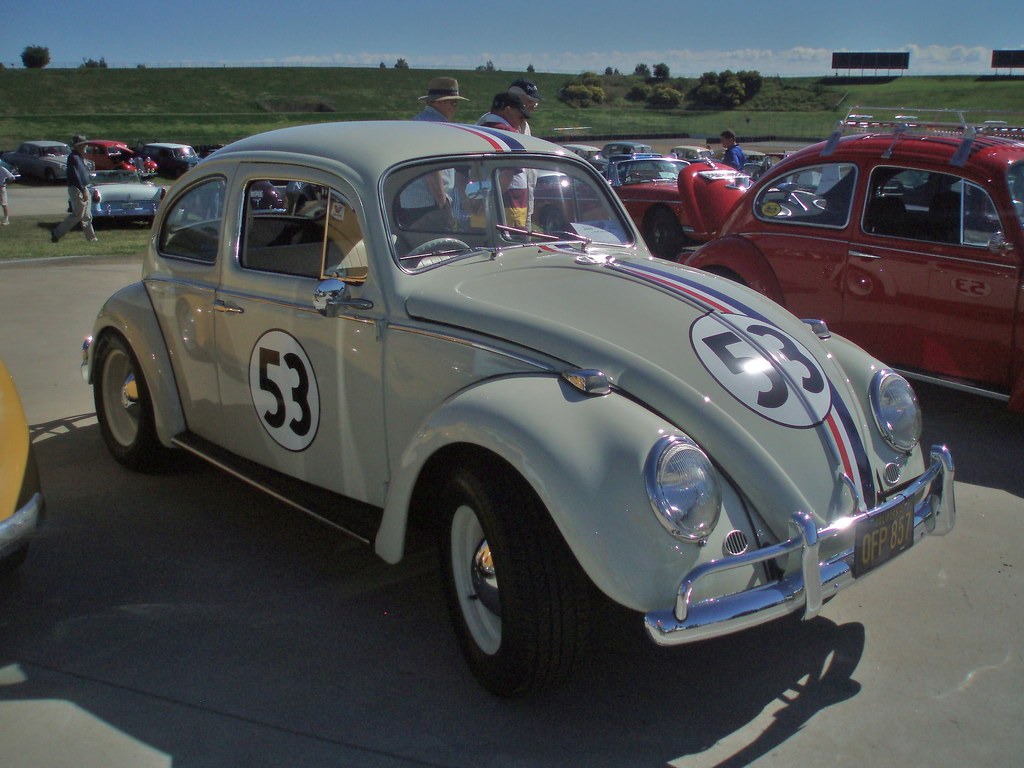
8. **Volkswagen Beetle: The Global Icon**It’s impossible to talk about the Golden Age without celebrating the phenomenon that is the Volkswagen Beetle. Compact, utterly reliable, and universally adored, this charming little car didn’t just become a global icon; it became a cherished member of families and a symbol of freedom across generations. Its timeless design and remarkable affordability ensured it wormed its way into the hearts of drivers worldwide, proving that automotive greatness doesn’t always need a thunderous V8.
Indeed, the Beetle achieved astounding success, becoming the best-selling car in the world with over 21 million units produced by 2003! Here in the U.S., it transcended mere transportation, simultaneously symbolizing counterculture and practicality. It wasn’t uncommon to see Beetles adorned with peace signs during the vibrant 1960s, a testament to its widespread appeal and its role in shaping an era.
Beyond its cult status, the Beetle was a marvel of accessible engineering. Its simple air-cooled engine was legendary for its robustness and ease of maintenance, capable of being removed with just a few bolts. This ingenious design made it one of the easiest cars to repair, contributing significantly to its widespread adoption and cementing its reputation as a no-nonsense, dependable vehicle that everyone could love.
Car Model Information: 2012 Volkswagen Beetle 2.5L
Sp: uk
Name: Volkswagen Type 1,”Beetle”
Caption: 1965–1966 Volkswagen Käfer
Manufacturer: Volkswagen
Alt: A front-three quarters view of a pale-yellow Volkswagen Käfer. It features 165/80R15 tires, which shod 15×4. 5″ silver, circular wheels. The Käfer features a beetle-like body, and its window is open. The picture is taken with much greenery in the background, and the photo was edited to give it a more warmer tone.
Aka: List of names for the Volkswagen Type 1
Assembly: #Markets and assembly
Designer: Ferdinand Porsche
Class: Small family car
BodyStyle: Sedan (automobile),convertible
Production: 1938–2003,21,529,464 produced
Successor: Volkswagen Golf Mk1,Volkswagen Gol#First generation (Typ30, 1980),Volkswagen New Beetle
Layout: Rear-engine, rear-wheel-drive layout
Engine: Petrol,Volkswagen air-cooled engine,1192 cc H4,1285 cc H4,1493 cc H4,1584 cc H4
Transmission: manual transmission,Saxomat,Autostick
Wheelbase: convert
Length: convert
Width: convert
Height: 1500 mm
Abbr: on
Weight: convert
Categories: 1940s cars, 1950s cars, 1960s cars, 1970s cars, 1980s cars
Summary: The Volkswagen Beetle, officially the Volkswagen Type 1, is a small family car produced by the German company Volkswagen from 1938 to 2003. A global cultural icon known for its bug-like design, the Beetle is widely regarded as one of the most influential cars of the 20th century. Its production period of 65 years is the longest for any single generation of automobile, and its total production of 21.5 million units makes it the most produced car of a single platform in history and the second-highest of all nameplates manufactured in the 20th century.
The Beetle was conceived in the early 1930s. The leader of Nazi Germany, Adolf Hitler, decided there was a need for a people’s car—an inexpensive, simple, mass-produced car—to serve Germany’s new road network, the Reichsautobahn. The German engineer Ferdinand Porsche and his design team began developing and designing the car in the early 1930s, but the fundamental design concept can be attributed to Béla Barényi in 1925, predating Porsche’s claims by almost ten years. The result was the Volkswagen Type 1 and the introduction of the Volkswagen brand. Volkswagen initially slated production for the late 1930s, but the outbreak of war in 1939 meant that production was delayed until the war had ended. The car was originally called the Volkswagen Type 1 and marketed simply as the Volkswagen. It was not until 1968 that it was officially named the “Beetle”.
Volkswagen implemented designations for the Beetle in the 1960s, including 1200, 1300, 1500, 1600, 1302, and 1303. Volkswagen introduced a series of large luxury models throughout the 1960s and 1970s—comprising the Type 3, Type 4 and K70—to supplement the Beetle, but none of these models achieved the level of success that it did. In 1972, it became the best-selling car of all time, a position it retained for nearly three decades. Rapidly changing consumer preferences toward front-wheel drive compact hatchbacks in Europe prompted Volkswagen’s gradual shift away from rear-wheel drive, starting with the Golf in 1974. In the late 1970s and ’80s, Japanese automakers dominated some markets around the world, which contributed to the Beetle’s declining popularity.
The Beetle remains one of the best-selling cars of all time and is the first to sell over 20 million units. Over its lifespan, its design remained consistent, yet Volkswagen implemented over 78,000 incremental updates. These modifications were often subtle, involving minor alterations to its exterior, interior, colours, and lighting. Some more noteworthy changes included the introduction of new engines, models and systems, such as improved technology or comfort. The Beetle maintains a substantial cultural influence and is regarded as one of the most iconic vehicles in automotive history; its success largely influenced the way automobiles are designed and marketed, and propelled Volkswagen’s introduction of a Golf-based series of vehicles.
Get more information about: Volkswagen Beetle
Buying a high-performing used car >>>
Brand: Volkswagen Model: Beetle
Price: $13,985 Mileage: 27,389 mi.
Read more about: Remember These? 12 Mind-Blowing Classic TV Car Ads That Vanished From Our Screens (But Live On In Our Hearts!)

9. **Ford Thunderbird: The Personal Car Pioneer**The mid-1950s heralded a new kind of automotive desire, and the Ford Thunderbird stepped onto the scene, not as a direct sports car rival, but as something entirely fresh: the personal car. Ford had anticipated modest sales, yet the Thunderbird defied expectations, soaring past 16,000 units in its first year alone—an incredible ten times the output of its closest competitor, the Corvette. This runaway success proved an undeniable hunger for a stylish, comfortable, and potent two-seater.
Buyers were absolutely smitten with the Thunderbird’s blend of sophistication and muscle. Its removable hardtop offered open-air exhilaration, while the powerful V8 engine delivered exhilarating performance. The distinctive long hood and short deck design became an instant classic, telegraphing an air of sporty elegance that resonated deeply with a generation seeking a car that reflected their individual aspirations.
More than just a beautiful machine, the Thunderbird pioneered an entirely new concept in the automotive world. It skillfully blended performance with luxury, creating the idea of the “personal car” – a vehicle designed for individual enjoyment rather than pure utility or aggressive sport. This innovative approach became a major trend that reshaped the automotive landscape throughout the 1960s and 70s, making the Thunderbird a true visionary of its time.
Car Model Information: 1956 Ford Thunderbird Base
Name: Ford Thunderbird
Caption: 1957 Thunderbird
Manufacturer: Ford Motor Company
Production: unbulleted list
ModelYears: unbulleted list
Class: unbulleted list
Layout: Front-engine, rear-wheel drive layout
Categories: 1960s cars, 1970s cars, 1980s cars, 1990s cars, 2000s cars
Summary: The Ford Thunderbird is a personal luxury car manufactured and marketed by Ford Motor Company for model years 1955 to 2005, with a hiatus from 1998 to 2001.
Ultimately gaining a broadly used colloquial nickname, the T-Bird, the model was introduced as a two-seat convertible, subsequently offered variously in a host of body styles including as a four-seat hardtop coupe, four-seat convertible, five-seat convertible and hardtop, four-door pillared hardtop sedan, six-passenger hardtop coupe, and five-passenger pillared coupe, before returning in its final generation, again as a two-seat convertible.
At its inception, Ford targeted the two-seat Thunderbird as an upscale model. The 1958 model year design introduced a rear seat and arguably marked the expansion of a market segment that came to be known as personal luxury cars, positioned to emphasize comfort and convenience over handling and high-speed performance.
Get more information about: Ford Thunderbird
Buying a high-performing used car >>>
Brand: Ford Model: Thunderbird
Price: $34,999 Mileage: 87,117 mi.
Read more about: Gearheads, Start Your Engines! These 12 Vintage Icons Still Define Automotive Perfection
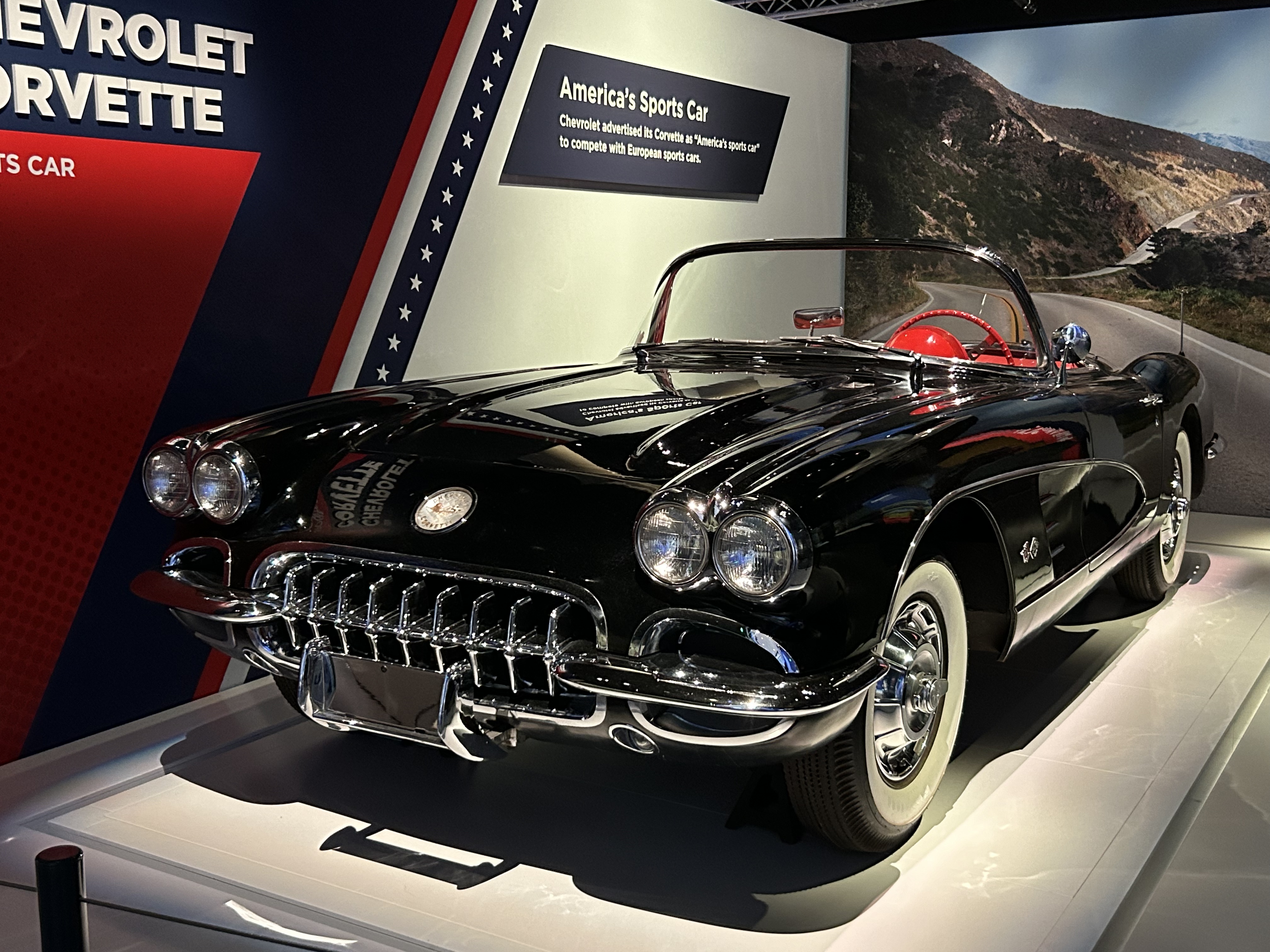
10. **Chevrolet Corvette: America’s Sports Car Genesis**For many, the name Corvette is synonymous with American sports car prowess, and its journey began with a bang in the Golden Age. The very first Corvettes rolled off the line in 1953, initially equipped with a modest “Blue Flame” inline-six engine and an automatic transmission. While perhaps not the raw powerhouse it would become, it was a groundbreaking step, introducing America to the concept of a homegrown performance machine that looked like nothing else on the road.
Chevrolet, ever attentive to enthusiast demand, quickly understood the need for more muscle. By 1955, the Corvette had wisely upgraded to formidable V8 engines, forever altering its trajectory and setting the stage for its legendary performance. Interestingly, fiberglass was chosen for its sleek body not only for its lightweight advantages but also due to a timely strike among GM’s steel suppliers, turning a challenge into an iconic design element.
Today, the Corvette isn’t just a car; it’s a living legend. It stands proudly as the longest continuously produced sports car in history, a testament to its enduring appeal, constant evolution, and the deep-seated passion it ignites in drivers and collectors alike. From its humble inline-six beginnings to the thunderous V8s that define it, the Corvette’s story is one of unwavering American automotive spirit.
Car Model Information: 2019 Chevrolet Corvette Stingray
Name: Chevrolet Corvette
Caption: 2021 Chevrolet Corvette C8
Manufacturer: Chevrolet
Production: 1953–present
ModelYears: bulleted list
Assembly: bulleted list
Class: Sports car
BodyStyle: coupé
Layout: Front-engine, rear-wheel-drive layout,Rear mid-engine, rear-wheel-drive layout
Categories: 1950s cars, 1960s cars, 1970s cars, 1980s cars, 1990s cars
Summary: The Chevrolet Corvette is a line of American two-door, two-seater sports cars manufactured and marketed by General Motors under the Chevrolet marque since 1953. Throughout eight generations, indicated sequentially as C1 to C8, the Corvette is noted for its performance, distinctive styling, lightweight fiberglass or composite bodywork, and competitive pricing. The Corvette has had domestic mass-produced two-seater competitors fielded by American Motors, Ford, and Chrysler; it is the only one continuously produced by a United States auto manufacturer. It serves as Chevrolet’s halo car.
In 1953, GM executives accepted a suggestion by Myron Scott, then the assistant director of the Public Relations department, to name the company’s new sports car after the corvette, a small, maneuverable warship. Initially, a relatively modest, lightweight 6‑cylinder convertible, subsequent introductions of V8 engines, competitive chassis innovations, and rear mid-engined layout have gradually moved the Corvette upmarket into the supercar class. In 1963, the second generation was introduced in coupe and convertible styles. The first three Corvette generations (1953–1982) employed body-on-frame construction, and since the C4 generation, introduced in 1983 as an early 1984 model, Corvettes have used GM’s unibody Y‑body platform. All Corvettes used front mid-engine configuration for seven generations, through 2019, and transitioned to a rear mid-engined layout with the C8 generation.
Initially manufactured in Flint, Michigan, and St. Louis, Missouri, the Corvette has been produced in Bowling Green, Kentucky, since 1981, which is also the location of the National Corvette Museum. The Corvette has become widely known as “America’s Sports Car.” Automotive News wrote that after being featured in the early 1960s television show Route 66, “the Corvette became synonymous with freedom and adventure,” ultimately becoming both “the most successful concept car in history and the most popular sports car in history.”
Get more information about: Chevrolet Corvette
Buying a high-performing used car >>>
Brand: Chevrolet Model: Corvette
Price: $47,990 Mileage: 20,872 mi.
Read more about: America’s Iconic Sports Car: Decoding the Most Problematic Corvette Models in History to Help You Buy Smart
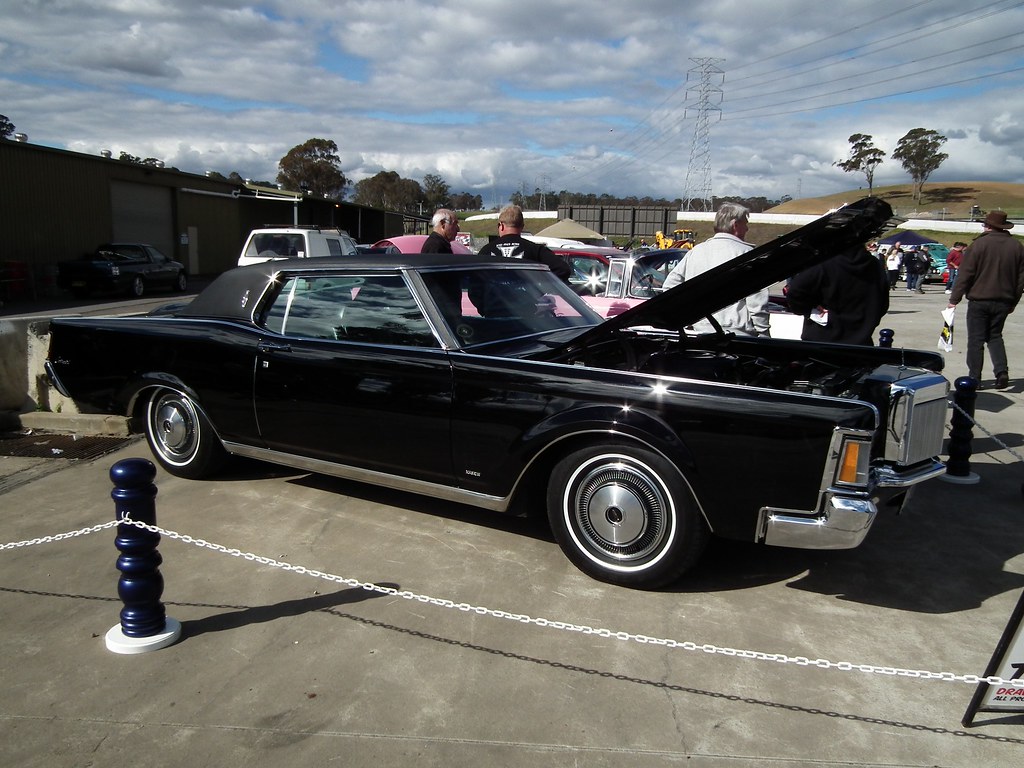
11. **Lincoln Continental Mark II: Understated Elegance**In an era often defined by chrome and extravagance, the Lincoln Continental Mark II emerged as a beacon of understated elegance, demonstrating that true luxury spoke softly but carried immense presence. This magnificent machine, produced between 1956 and 1957, was unequivocally one of the most luxurious cars of its time, its clean lines and impeccable craftsmanship marking a deliberate shift from flamboyant excess to sophisticated restraint.
What truly set the Mark II apart was its refined design philosophy. It was one of the first American cars to embrace smaller, simpler proportions than its predecessors, a bold move that prioritized harmony and grace over sheer size. This meticulous attention to detail resulted in a timeless aesthetic that continues to captivate automotive purists today, a masterclass in subtlety that exudes confidence.
Remarkably, each Continental Mark II was built to such an incredibly high standard that Ford reportedly lost money on every single sale. Yet, the company kept it in production, recognizing its crucial role in restoring Lincoln’s reputation for peerless quality and exclusive luxury. It was a halo car, designed to elevate the entire brand, a testament to an uncompromising vision of automotive excellence.
The Mark II’s legacy is further cemented by its association with historical significance. This very model was the car President John F. Kennedy rode in during his 1963 motorcade in Dallas, an iconic image forever etched into the annals of American history. Its presence in such a moment speaks volumes about its stature and the respect it commanded in its brief, but brilliant, production run.
Car Model Information: 2024 GMC Sierra 1500 SLT
Caption: 1956 Continental Mark II
Predecessor: Lincoln Continental#First generation (1940–1942, 1946–1948)
Successor: Lincoln Continental#Third generation (1958–1960),Lincoln Continental Mark III
Name: Continental Mark II
ModelYears: 1956–1957
Manufacturer: Ford Motor Company
Assembly: Ford Pilot Plant,Allen Park, Michigan
Related: Lincoln Futura
Layout: Front-engine, rear-wheel-drive layout
BodyStyle: hardtop
Engine: 368 cuin
Abbr: on
Transmission: Turbo-Drive 3-speed automatic
Wheelbase: 126.0 in
Length: 218.4 in
Width: 77.5 in
Height: 56.3 in
Weight: 5000 lb
Designer: John Reinhart (1953)
Categories: Articles with short description, Cars discontinued in 1957, Cars introduced in 1956, Commons category link from Wikidata, Ford Motor Company marques
Summary: The Continental Mark II is an ultra-luxury coupé that was sold by the Continental Division of Ford for the 1956 and 1957 model years. The first (and only) product line of Continental, the Mark II was developed as the worldwide flagship vehicle of Ford Motor Company. Developed as a successor for the 1939–1948 Lincoln Continental, the Mark II derived its nameplate from European manufacturing practice, denoting a second generation of the model family; Ford would later use this nomenclature for the Mark Series of flagship personal luxury cars.
As the most expensive American-produced automobile of the time, the Mark II was marketed against the Rolls-Royce Silver Cloud and the Bentley Continental. Produced solely as a two-door hardtop coupe, the Mark II was largely hand-assembled, sourcing its V8 powertrain from the standard Lincoln line.
Following the 1957 model year, the Mark II was discontinued, with the hand-built coupe replaced by a rebranded Lincoln. For 1969, Ford revived the Mark series chronology, debuting the (second) Continental Mark III coupe, leading to five successive generations, ending with the 1998 Lincoln Mark VIII coupe. Alongside its nameplate nomenclature, the Mark II debuted the integrated “Continental” spare-tire trunklid (in place of a bumper-mounted spare tire); each generation of the Mark Series (alongside the 1977–1980 Lincoln Versailles and 1982–1987 Lincoln Continental) used a variation of this feature. The Mark II also debuted the rectangular four-point star emblem, which remains in use on Lincoln-brand vehicles (in modified form) today.
The Mark II was assembled by Ford at Allen Park Body and Assembly in Allen Park, Michigan. Following the discontinuation of the Mark II, the facility was converted to the headquarters of the ill-fated Edsel brand. Today, it remains as the Ford Pilot Plant, where Ford pre-production vehicles are hand-assembled for testing and production development.
Get more information about: Continental Mark II
Buying a high-performing used car >>>
Brand: Lincoln Model: Continental Mark II
Price: $43,759 Mileage: 32,694 mi.
Read more about: From Dad’s Pride to Your Disdain: Why Millennials Are Ditching These 15 Classic Boomer Cars

12. **Studebaker Avanti: Design That Broke Records**The Studebaker Avanti burst onto the scene in 1962 like a bolt of lightning, a truly revolutionary machine that dared to defy convention. Its sleek, radical styling looked like nothing else on American roads, almost futuristic in its audacity. This car wasn’t just built to turn heads; it was engineered to perform, and it introduced a groundbreaking feature that set a new standard for safety and performance.
The Avanti proudly became the first American car to feature front disc brakes as standard equipment, a technology borrowed directly from the cutting edge of aircraft engineering. This innovative braking system provided superior stopping power, a crucial advantage for a car designed for speed. In a remarkable feat of rapid development, the Avanti was designed in an astonishing 40 days, a testament to the passionate vision of its creators.
Its performance matched its daring looks and advanced features. The Avanti wasn’t just fast; it was record-breakingly quick, shattering an impressive 29 speed records at the legendary Bonneville Salt Flats. Sadly, Studebaker’s financial troubles meant fewer than 6,000 units were built, making it a rare gem today. Yet, its bold design influence lived on, continuing to inspire later independent Avanti models and cementing its place as a true innovator.
Car Model Information: 1963 Studebaker Avanti R1
Name: Studebaker Avanti
Caption: 1963 Studebaker Avanti
Manufacturer: Studebaker
Aka: Avanti
Production: 1962: 1,200;
Assembly: Studebaker Corporation#Studebaker Factories,South Bend, Indiana
Predecessor: Studebaker Gran Turismo Hawk
Class: Personal luxury car
BodyStyle: coupe
Layout: FR layout
Engine: 289 CID
Abbr: on
Transmission: Manual transmission
Wheelbase: 109 in
Length: 192.4 in
Width: 70.3 in
Height: 53.8 in
Weight: 3095 lb
Related: Studebaker Lark
Designer: Raymond Loewy#Avanti
Categories: All articles with incomplete citations, Articles with incomplete citations from September 2018, Articles with short description, CS1 errors: missing title, Cars discontinued in 1963
Summary: The Studebaker Avanti is a personal luxury coupe manufactured and marketed by Studebaker Corporation between June 1962 and December 1963. A halo car for the maker, it was marketed as “America’s only four-passenger high-performance personal car.”
Described as “one of the more significant milestones of the postwar industry”, the Raymond Loewy-designed car offered safety features and high-speed performance. Called “the fastest production car in the world” upon its introduction, a modified Avanti reached over 170 mph (270 km/h) with its supercharged 289-cubic-inch (4,740 cm3) R3 engine at the Bonneville Salt Flats. In all, it broke 29 world speed records at the Bonneville Salt Flats.
Following Studebaker’s discontinuation of the model, a succession of five ventures manufactured and marketed derivatives of the Avanti model through 2006. These ventures licensed intellectual property and, in some cases procured parts, through arrangements with the successors to the Studebaker assets.
Get more information about: Studebaker Avanti
Buying a high-performing used car >>>
Brand: Studebaker Model: Avanti
Price: $17,500 Mileage: 0 mi.
Read more about: Beyond Their Era: 14 Classic Cars That Revolutionized Automotive Design and Engineering, Then Faded From Memory
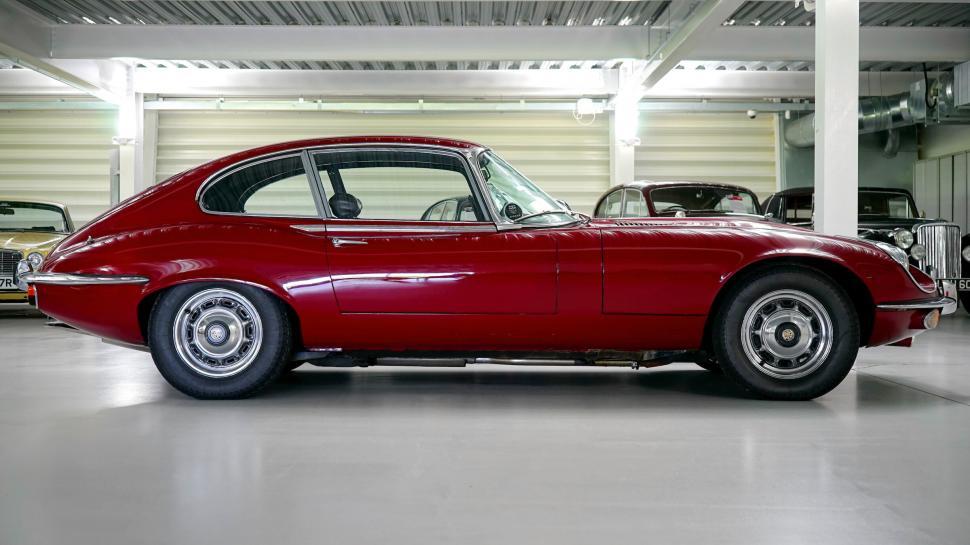
13. **Jaguar E-Type: Timeless Design, Breathtaking Performance**When the 1961 Jaguar E-Type made its debut, Enzo Ferrari himself famously declared it “the most beautiful car ever made.” This iconic statement solidified the E-Type’s place in automotive legend from day one. Its long, sensuous hood, curvaceous body, and instantly recognizable silhouette weren’t just pretty; they set new standards for sports car design, influencing countless vehicles that followed. It was, and remains, a masterpiece of form and function.
But the E-Type was far more than just a pretty face; it packed serious, race-bred performance beneath its stunning exterior. Propelled by a powerful 3.8-liter inline-six engine, it was capable of an exhilarating 150 mph, making it one of the fastest cars of its time. Its advanced engineering also included four-wheel disc brakes and independent suspension at all corners, ensuring it handled as beautifully as it looked.
Perhaps most astonishingly, this level of beauty, performance, and sophistication came at an almost unbelievable price point – roughly half the cost of comparable Ferraris or Aston Martins. This made the E-Type a relative bargain, democratizing true sports car exhilaration and making it accessible to a wider audience. Even today, its profound influence on design is acknowledged with its permanent display at the Museum of Modern Art in New York, a testament to its timeless artistry.
Car Model Information: 1971 Jaguar E-Type Restomod
Sp: uk
Name: Jaguar E-Type
Caption: 1961 E-Type Series 1 3.8-Litre, the first production model of this open two-seater
Aka: Jaguar XK-E (North America),Jaguar V-12
Manufacturer: Jaguar Cars
Production: 1961–1974
Class: Sports car
Predecessor: Jaguar XK150
Related: Jaguar D-Type,Jaguar XJ13
Successor: Jaguar XJS
Layout: FMR layout
Assembly: Coventry,England
Designer: Malcolm Sayer
Categories: 1970s cars, 2+2 coupés, All Wikipedia articles written in British English, All articles with dead external links, All articles with specifically marked weasel-worded phrases
Summary: The Jaguar E-Type, or the Jaguar XK-E for the North American market, is a British front mid-engined sports car that was manufactured by Jaguar Cars Ltd from 1961 to 1974. Its sleek appearance, advanced technologies, high performance, and competitive pricing established it as an icon. The E-Type’s claimed 150 miles per hour (240 km/h) top speed, sub-7-second 0 to 60 mph (97 km/h) acceleration, largely unitary body construction, front and rear independent suspension with disc brakes, mounted inboard at the rear, and rack-and-pinion steering spurred industry-wide changes.
The E-Type was based on Jaguar’s D-Type racing car, which had won the 24 Hours of Le Mans for three consecutive years beginning in 1955.
The E-Type employed what was, for the early 1960s, a novel design principle, with a front subframe carrying the engine, front suspension and front bodywork bolted directly to the body tub. No ladder frame chassis, as was common at the time, was needed and as such the first cars weighed only 1,315 kg (2,899 lb).
It is rumored that, on its debut on 15 March 1961, Enzo Ferrari called it “the most beautiful car ever made”, but this statement is not fully confirmed. In 2004, Sports Car International magazine placed the E-Type at number one on their list of Top Sports Cars of the 1960s. In March 2008, the Jaguar E-Type ranked first in The Daily Telegraph’s online list of the world’s “100 most beautiful cars” of all time.
Get more information about: Jaguar E-Type
Buying a high-performing used car >>>
Brand: Jaguar Model: E-Type
Price: $64,900 Mileage: 2,455 mi.
Read more about: Gearheads, Start Your Engines! These 12 Vintage Icons Still Define Automotive Perfection

14. **Aston Martin DB5: The Ultimate Spy Car**Few cars have captured the global imagination quite like the Aston Martin DB5, immortalized as the ultimate cinematic car by its starring role in the James Bond films. This British masterpiece effortlessly blended sophisticated elegance with thrilling performance and an arsenal of (fictional) gadgetry, becoming an instant icon of style, power, and secret agent cool. It’s a car that evokes adventure and an undeniable sense of prestige.
Beneath its sleek, handcrafted aluminum body, the DB5 was a true performer. It housed a potent 4.0-liter straight-six engine, churning out a respectable 282 horsepower, allowing it to reach a top speed of 145 mph – seriously impressive for its era. From 1963 to 1965, fewer than 1,100 of these magnificent machines were built, securing its place as one of Aston Martin’s rarest and most coveted icons.
The DB5’s indelible link to 007 created an unparalleled surge in demand, so much so that even Sean Connery himself, the original Bond, bought one for his personal collection. This unique blend of cinematic stardom and automotive excellence has only magnified its legendary status, turning it into one of the most sought-after collector cars in the world.
Today, the allure of the Bond DB5 remains as strong as ever, with original, film-related examples regularly commanding staggering prices, often exceeding $6 million at auction. It stands as a powerful testament to how a car, when perfectly cast, can transcend its mechanical purpose and become a cultural phenomenon, forever etched in our collective consciousness.
Car Model Information: 2024 GMC Sierra 1500 SLT
Name: Aston Martin DB5
Manufacturer: Aston Martin
Production: 1963–1965 (1,059 units),2020 (25 units)
Assembly: Newport Pagnell,England
Designer: Carrozzeria Touring Superleggera
Class: Grand tourer
BodyStyle: coupé
Layout: Front-engine, rear-wheel-drive layout
Engine: DOHC,Straight-6,3995 cc
Order: flip
Abbr: on
Powerout: convert
Transmission: ZF Friedrichshafen
Length: 4570 mm
Width: 1680 mm
Wheelbase: 98.0 in
Predecessor: Aston Martin DB4
Successor: Aston Martin DB6
Doors: 2
Weight: 3311 lb
Sp: uk
Categories: All Wikipedia articles written in British English, Articles with short description, Aston Martin vehicles, CS1: unfit URL, Cars discontinued in 1965
Summary: The Aston Martin DB5 is a British grand tourer (GT) produced by Aston Martin and designed by Italian coachbuilder Carrozzeria Touring Superleggera. Originally produced from 1963 to 1965, the DB5 was an evolution of the final series of DB4. The “DB” designation is from the initials of David Brown who built up the company from 1947 onwards.
The DB5 is best-known for its role in the James Bond films. It was first driven by the fictional spy in the film Goldfinger (1964). In 2013, the car featured on a “British Auto Legends” postage stamp issued by the Royal Mail.
Get more information about: Aston Martin DB5
Buying a high-performing used car >>>
Brand: Aston Martin Model: DB5
Price: $43,759 Mileage: 32,694 mi.
Read more about: Lights, Camera, Auction! Unearthing the 15 Most Shocking & Priceless Movie Props Ever Sold

15. **Chevrolet Chevelle SS 454: The Apex of Street Performance**When we talk about pure, unadulterated American muscle, the Chevrolet Chevelle SS 454 commands respect. This absolute powerhouse didn’t just set new standards for street performance; it dominated them with a staggering mix of aggressive style and brute force that left competitors trembling in its wake. Its presence defined the very height of muscle car culture, a roaring declaration of what raw power could achieve.
At its heart was a big-block engine, a marvel of muscle engineering that delivered relentless acceleration and undeniable authority. Chevrolet didn’t just build a car; they forged a legend, feared by rivals on the drag strip and admired by purists on the street. The Chevelle SS 454 wrapped this incredible power in a body that radiated confidence, a perfectly balanced machine that exuded menace with a touch of sophistication.
This model brought a unique equilibrium to the chaos of the muscle car wars, offering a level of refinement without ever diluting its ferocious edge. The Chevelle SS 454 stands as a lasting monument to America’s unyielding obsession with horsepower, a true icon that continues to symbolize the pinnacle of a golden era where performance reigned supreme and the sound of a big-block V8 was music to the ears.
Car Model Information: 1969 Chevrolet Chevelle SS
Name: Chevrolet Chevelle
Caption: 1970 Chevrolet Chevelle SS 396 Sport Coupe
Manufacturer: Chevrolet
Production: 1963–1977
ModelYears: 1964–1977
Class: Mid-size
Platform: GM A platform (RWD)
Layout: FR layout
Successor: Chevrolet Malibu
Categories: 1970s cars, All articles needing additional references, All articles that may contain original research, All articles with specifically marked weasel-worded phrases, All articles with unsourced statements
Summary: The Chevrolet Chevelle is a mid-sized automobile that was produced by the Chevrolet division of General Motors (GM) in three generations for the 1964 to 1977 model years. Part of the GM A-body platform, the Chevelle was one of Chevrolet’s most successful nameplates. Body styles included coupes, sedans, convertibles, and station wagons. The “Super Sport” versions were produced through the 1973 model year and Lagunas from 1973 through to 1976.
After a four-year absence, the El Camino was reintroduced as part of the new Chevelle lineup in 1964.
From 1964 to 1969, GM of Canada sold a modified version of the Chevelle that included a Pontiac-style grille, and a LeMans instrument panel, marketed as the Beaumont.
The Malibu was the top-of-the-line model to 1972, and completely replaced the Chevelle nameplate starting with the redesigned, and downsized 1978 model year.
Get more information about: Chevrolet Chevelle
Buying a high-performing used car >>>
Brand: Chevrolet Model: Chevelle
Price: $119,550 Mileage: 93 mi.
The Golden Age of Automobiles was so much more than a fleeting chapter in history; it was a vibrant, thrumming era of boundless creativity and profound cultural significance that continues to shape and inspire modern design to this day. Just think of the aerodynamic curves of those sleek sports cars, or the audacious, iconic tailfins of the luxury sedans—these weren’t just vehicles, they were benchmarks of innovation and undeniable style. Each car, a rolling piece of art, perfectly captured the spirit of its time. Iconic models, like the legendary 1956 Continental Mark II, famously owned by none other than Elvis Presley, remain shining symbols of progress and pure artistry, lovingly celebrated in museums and breathtaking restoration projects worldwide. The magnificent legacy of the Golden Age doesn’t just endure; it lives on, vividly inspiring future generations to revel in the sheer beauty and ingenious engineering that defines the open road. It’s a reminder that true automotive passion, when built with heart and daring, truly lasts forever.

